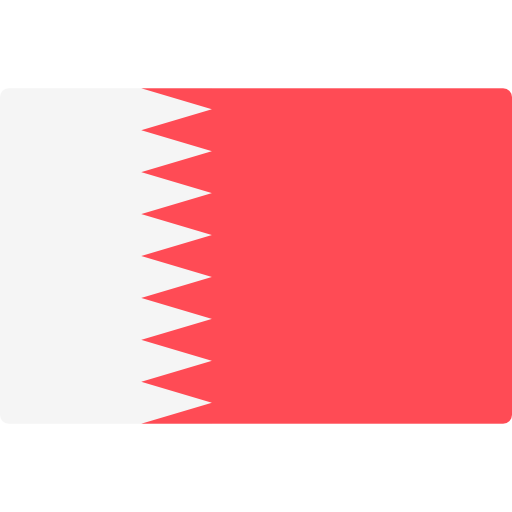Cost Of Living For a Family in Bahrain 2025
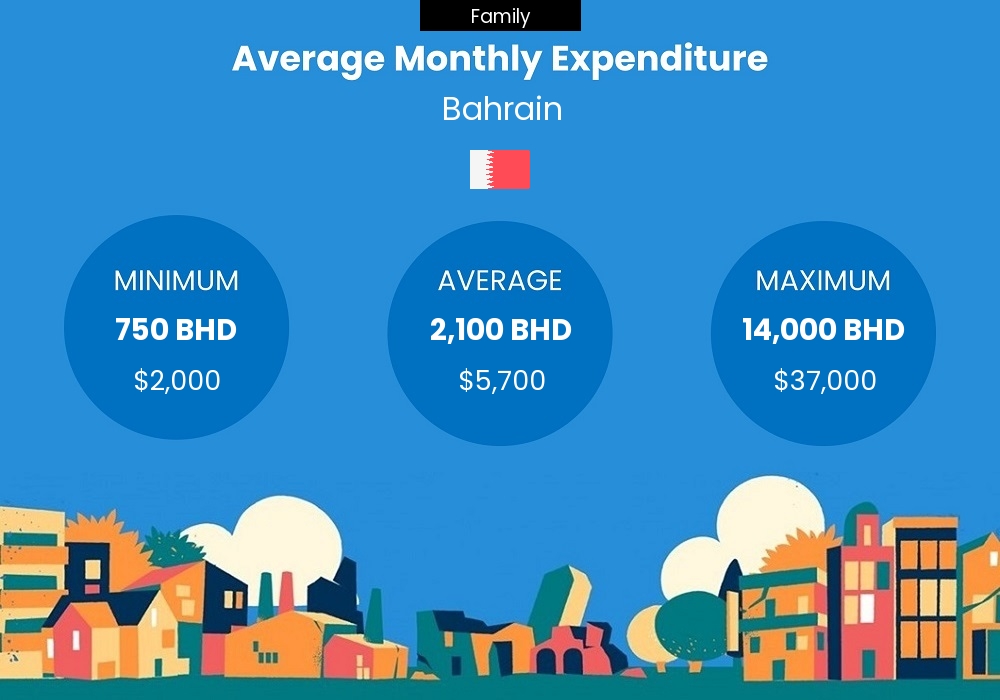
Average monthly spending for families in Bahrain
We consider a family to be a member of four members, two adults and two children. This is the most common type of family. From the figures below, it should be fairly easy to calculate the average spending for families of different sizes.
Average Monthly Expenditure
Currency: BHD
How much money does a family need in a month to survive in Bahrain?
Families in Bahrain spend around 1,600 BHD per month on average. Depending on the lifestyle, a family can survive with a monthly budget as low as 320 BHD or as high as 16,000 BHD. Location and income are very important factors and have a huge influence on expenditure and budget.
Prices and cost of goods and services in Bahrain
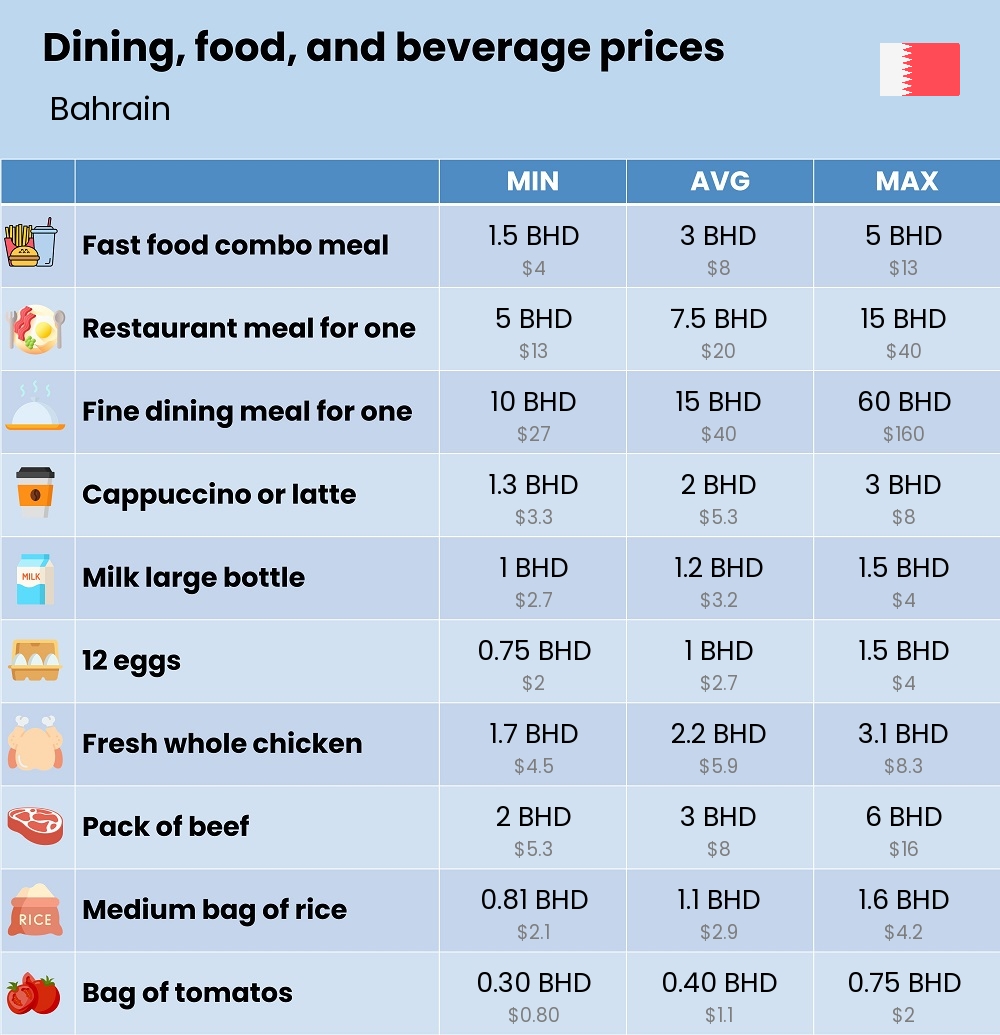
Dining, food, and beverages costs

Fast food combo meal

Restaurant meal for one

Fine dining meal for one

Cappuccino or latte
Grocery and market costs
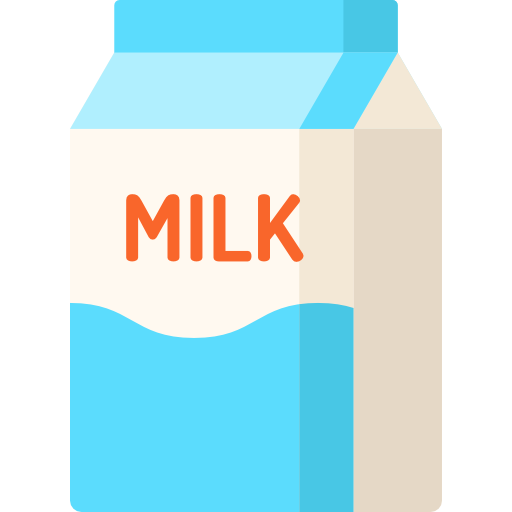
Milk large bottle

12 eggs

Fresh whole chicken

Pack of beef

Medium bag of rice

Bag of tomatos
| 0.30 BHD | 0.40 BHD | 0.75 BHD |

Bag of apples
| 0.54 BHD | 0.70 BHD | 1.2 BHD |
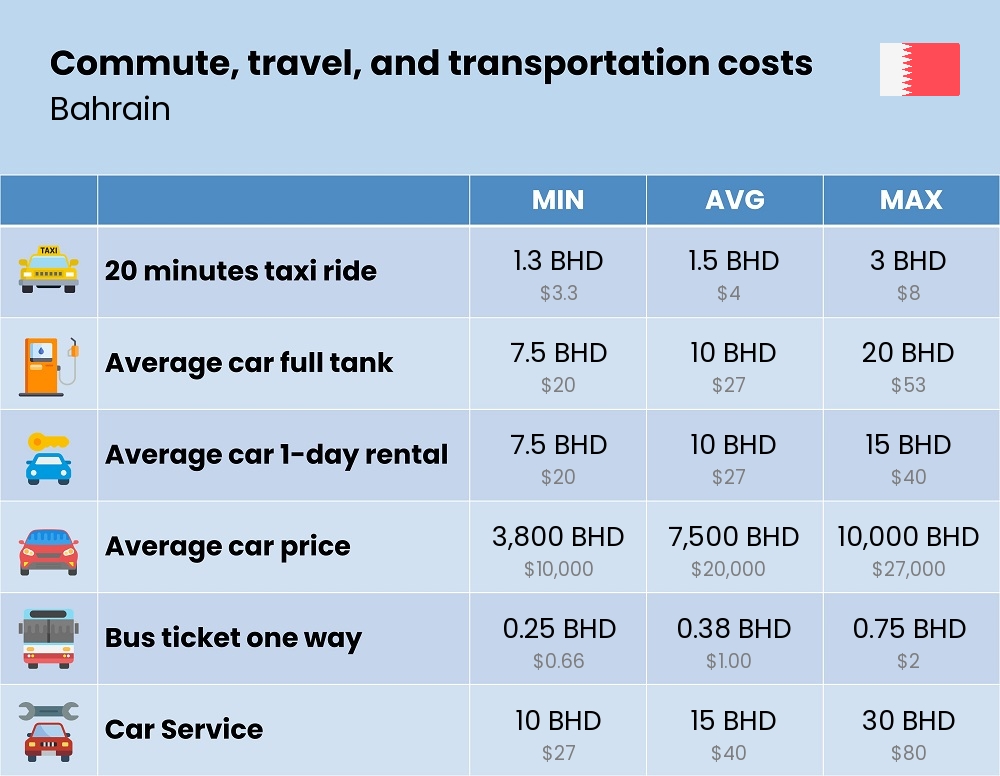
Commute, travel, and transportation costs

20 minutes taxi ride
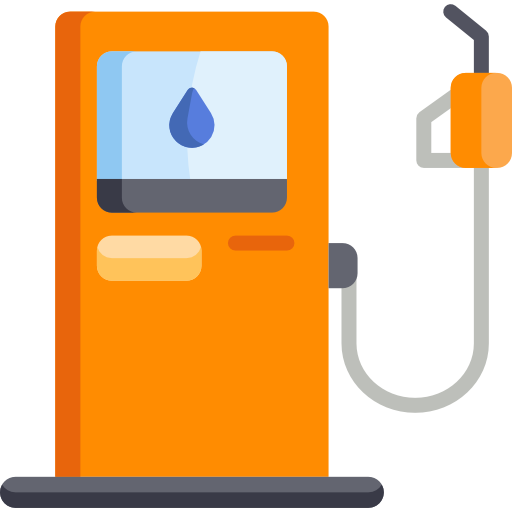
Average car full tank

Average car 1-day rental

Average car price
| 3,800 BHD | 7,500 BHD | 10,000 BHD |

Bus ticket one way
| 0.25 BHD | 0.38 BHD | 0.75 BHD |

Car Service
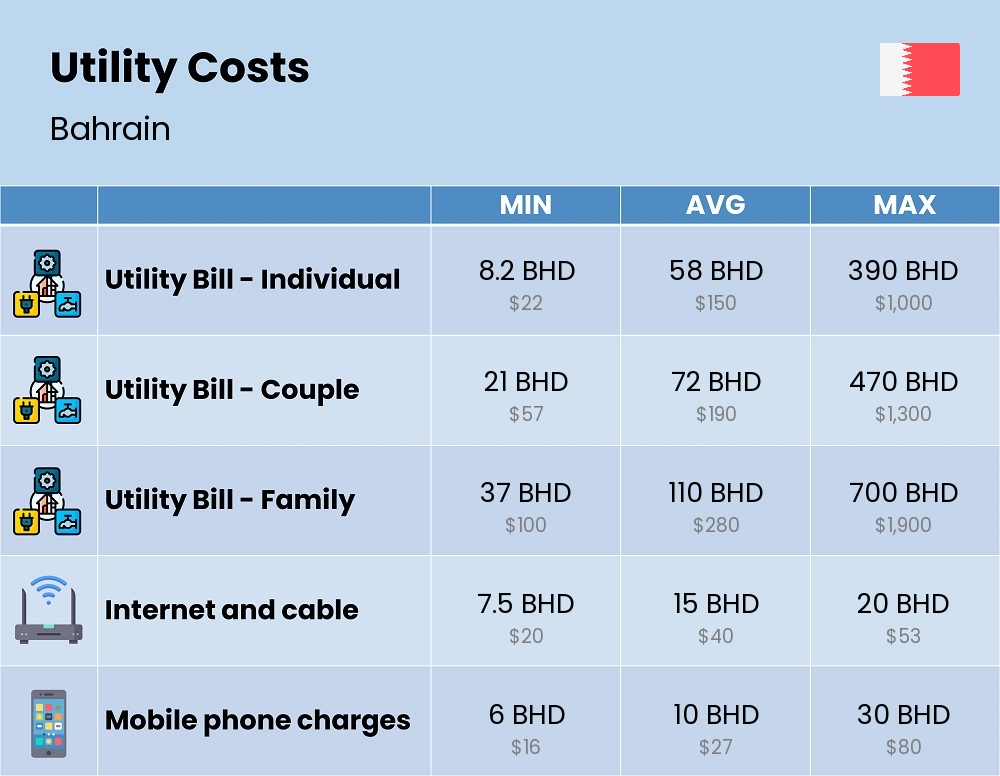
Utility cost (monthly)
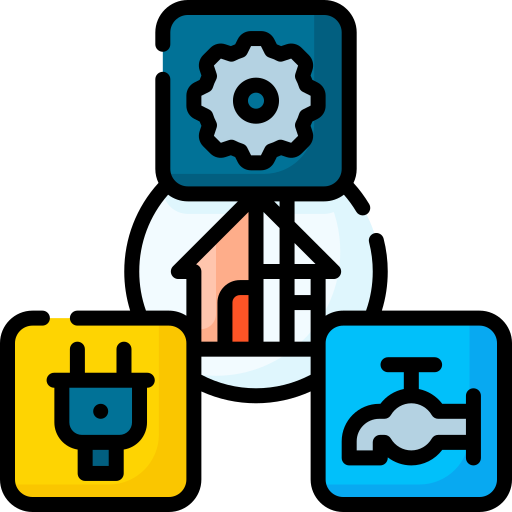
Utility Bill - Family

Internet and cable

Mobile phone charges
Leisure and activities costs

Movie ticket

One month gym membership
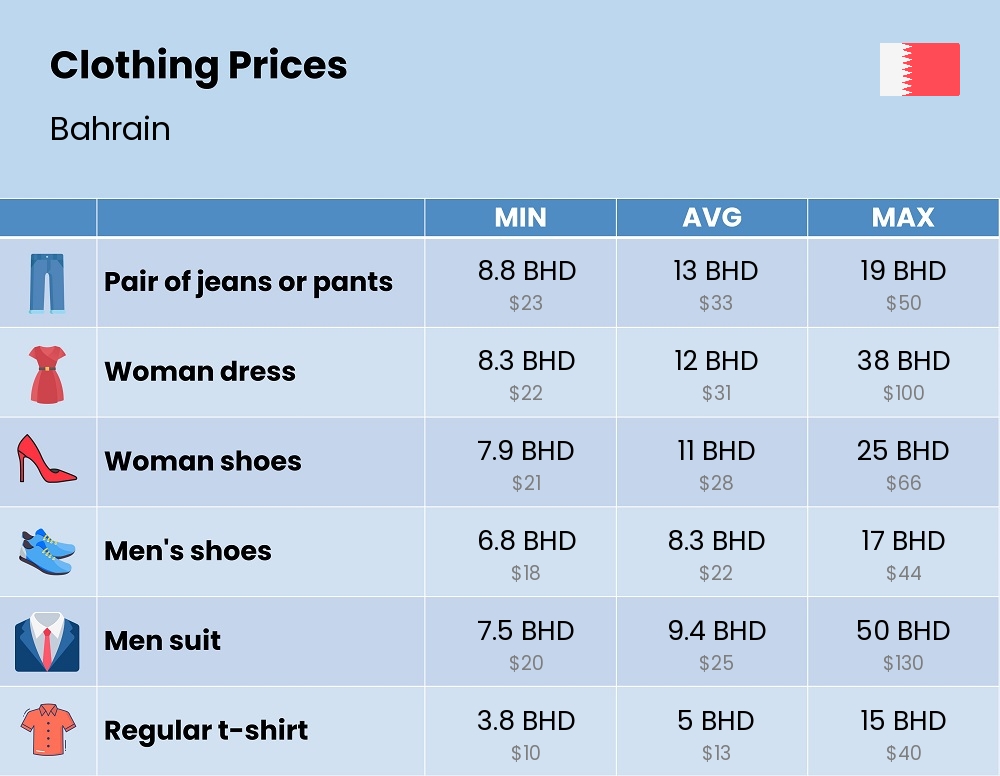
Cloths and accessories costs

Pair of jeans or pants

Woman dress

Woman shoes

Men's shoes

Men suit

Regular t-shirt
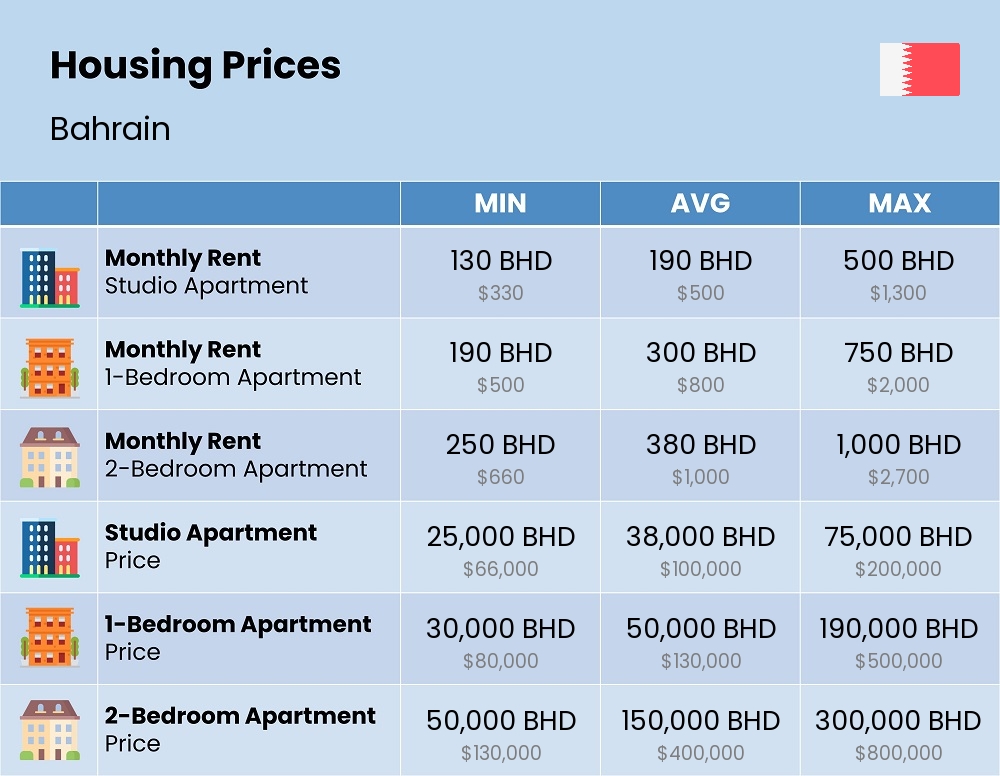
Housing costs / monthly rent

Studio apartment
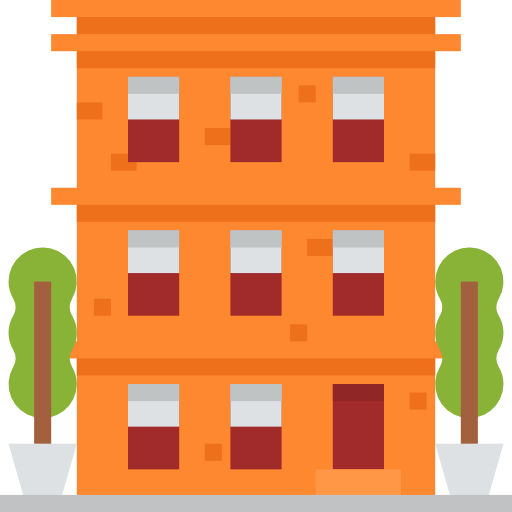
1-bedroom apartment

2-bedroom apartment
| 250 BHD | 380 BHD | 1,000 BHD |
Housing costs / Buying

Studio apartment
| 25,000 BHD | 38,000 BHD | 75,000 BHD |
| $66,000 | $100,000 | $200,000 |

1-bedroom apartment
| 30,000 BHD | 50,000 BHD | 190,000 BHD |
| $80,000 | $130,000 | $500,000 |

2-bedroom apartment
| 50,000 BHD | 150,000 BHD | 300,000 BHD |
| $130,000 | $400,000 | $800,000 |
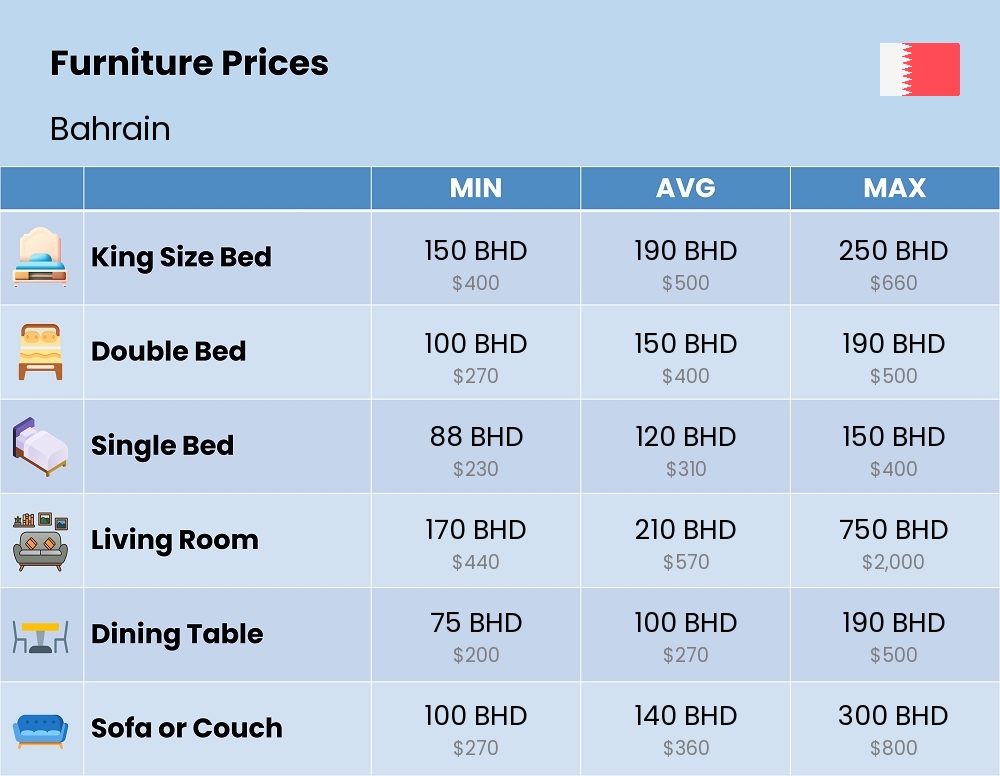
Furniture Costs

King Size Bed
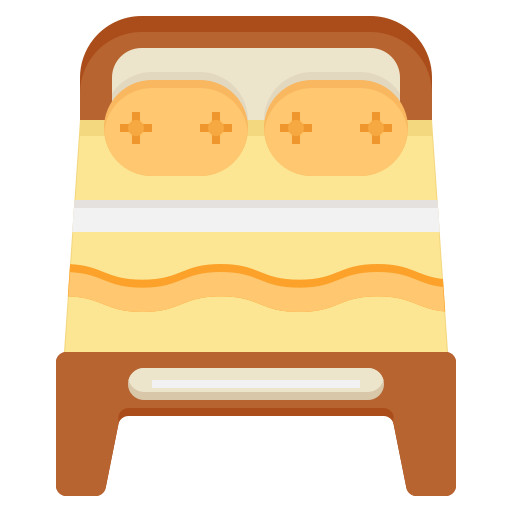
Double Bed

Single Bed

Living Room
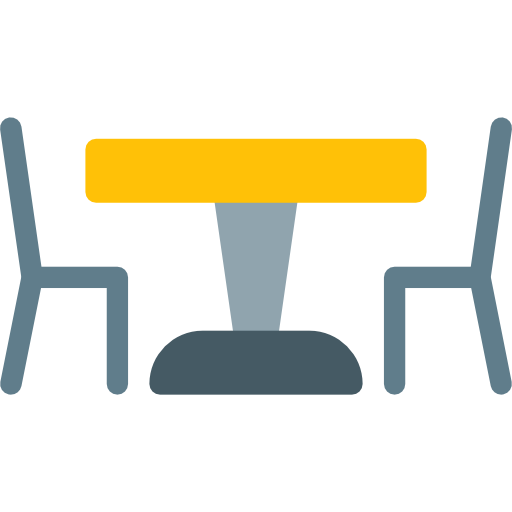
Dining Table

Sofa or Couch
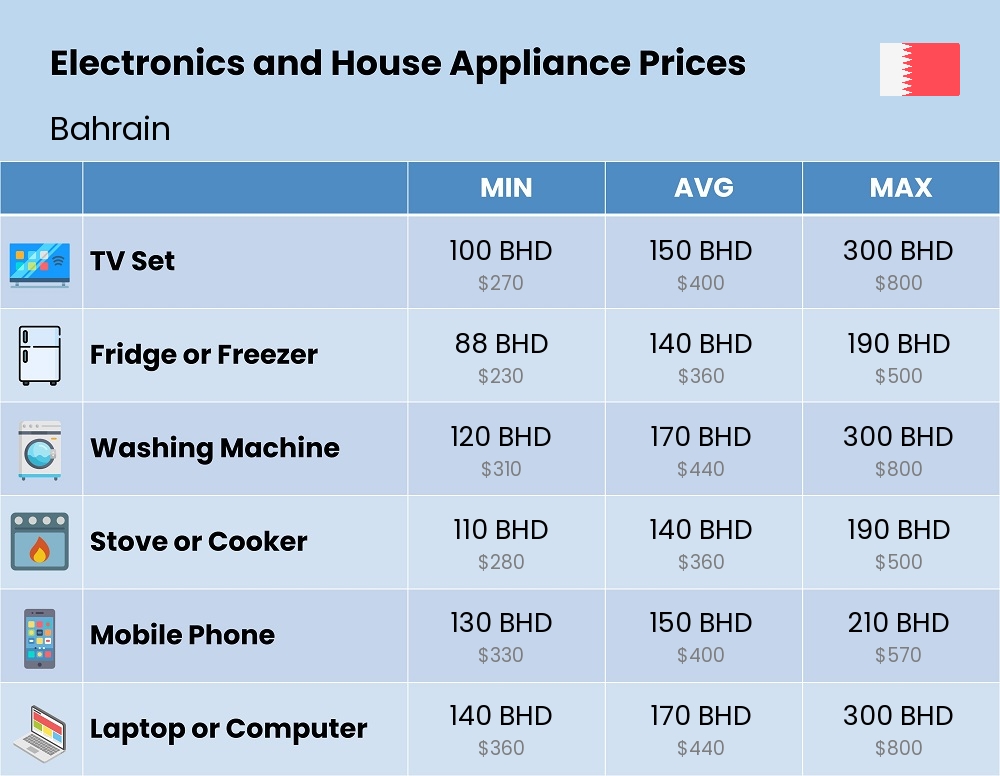
Electronics and House Appliance Costs

TV Set
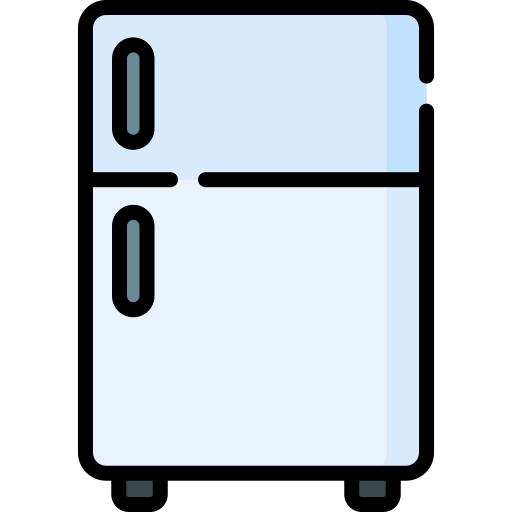
Fridge or Freezer
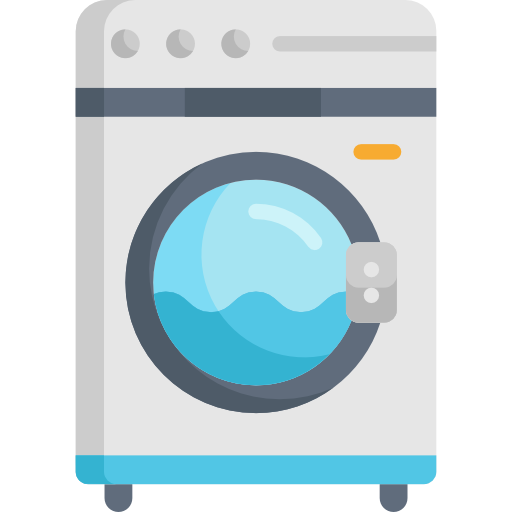
Washing Machine

Stove or Cooker

Mobile Phone

Laptop or Computer
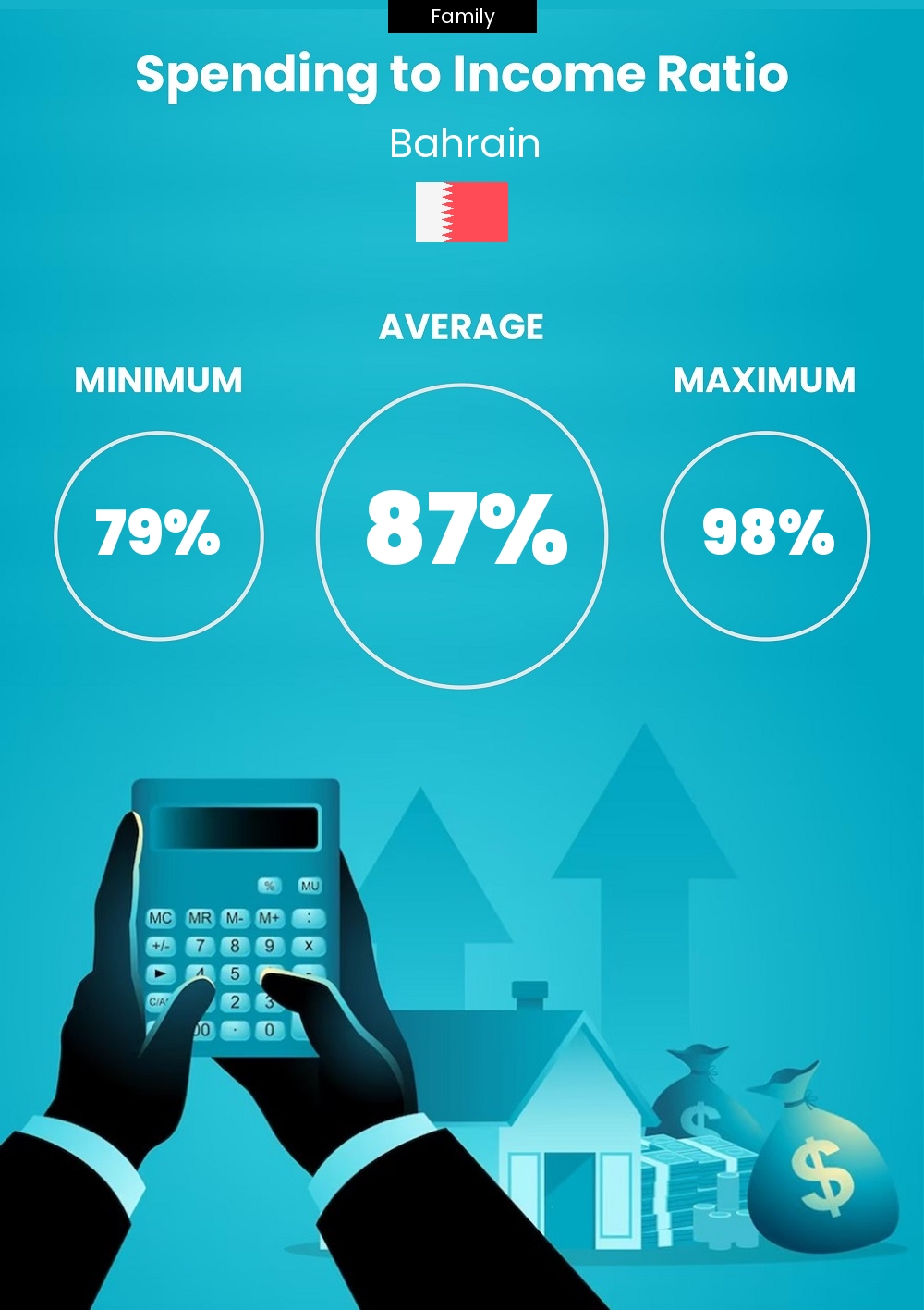
Family expenditure to income ratio in Bahrain
Analysing the how affordable it is for families to live in Bahrain
One of the most definite ways to determine how affordable a place is measuring the ratio of expenses to salary. A high expense-to-income to ratio indicates a high cost-of-living index while a low expenditure-to-salary ratio means the place is affordable to live in. Families usually spend a larger chunk of their income than other population groups. A typical and healthy expenditure percentage for a family of four ranges between 70% to 80%.
Spending to Income Ratio
87%
79% to 98%
( expenditure / income ) x 100
Families in Bahrain spend around 87% of their monthly income.
Some families spend as low as 79% of their income while some as high as 98%.
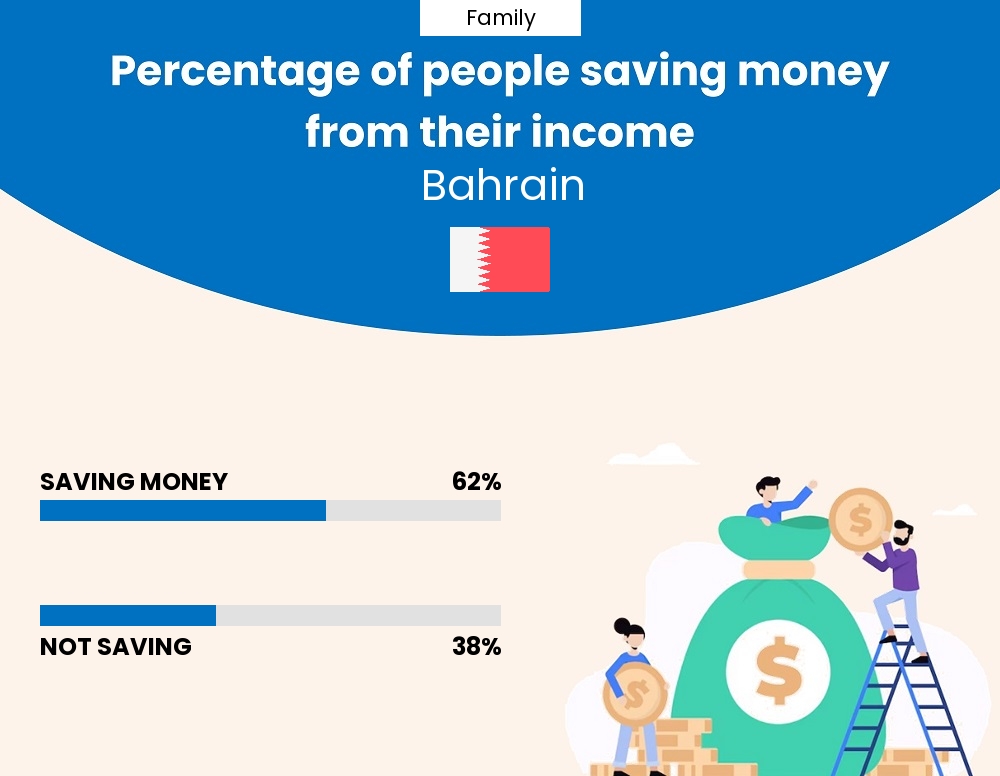
What percentage of families in Bahrain are able to save money and how much can they save?
Percentage of families that reported their ability to save money
Almost 62% of surveyed families in Bahrain said that they can save some money at the end of each month while 38% reported that they have to utilize their whole income to survive.
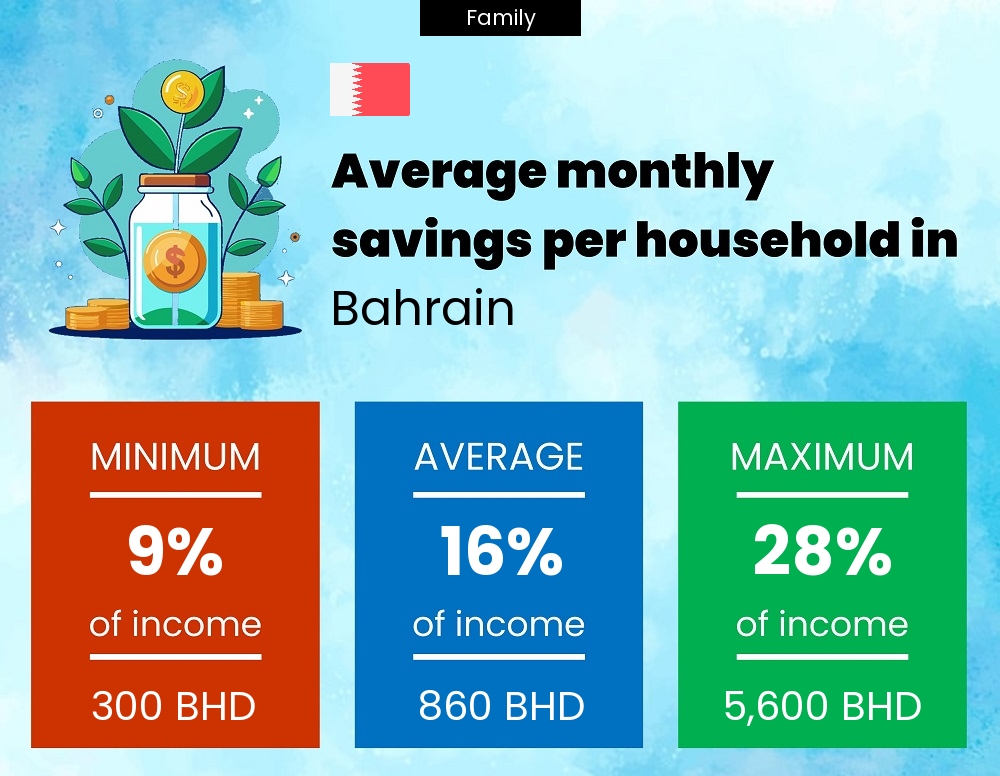
Savings-to-Income Ratio
The savings-to-income ratio is measured as the percentage of income that people save over a specific period and it is simply calculated by dividing the saved money by total income and then multiplying the result by 100. (Savings / Income) x 100.
How much money do families manage to add to their savings?
The amount of money that people can afford to save depends hugely on their income. It is better to focus on the percentage when trying to understand saving patterns.
Saving to Income Ratio
Average Monthly Saved Amount
130 BHD
$340 | 640 BHD
$1,700 | 6,400 BHD
$17,000 |
Savings to income distribution levels for families
| Saving To Income Ratio | % Families |
|---|
| 0% - 10% | 38% |
| 10% - 20% | 29% |
| 20% - 30% | 20% |
| 30% - 40% | 6% |
| 40% - 50% | 5% |
| > 50% | 2% |
Interpretation and Analysis
Families that are able to save money can put anywhere from 9% to 28% of their monthly income to their savings, with 16% being the average for most families. The average monthly amount of money that families can put aside is 640 BHD with 130 BHD and 6,400 BHD being the minimum and maximum respectively.
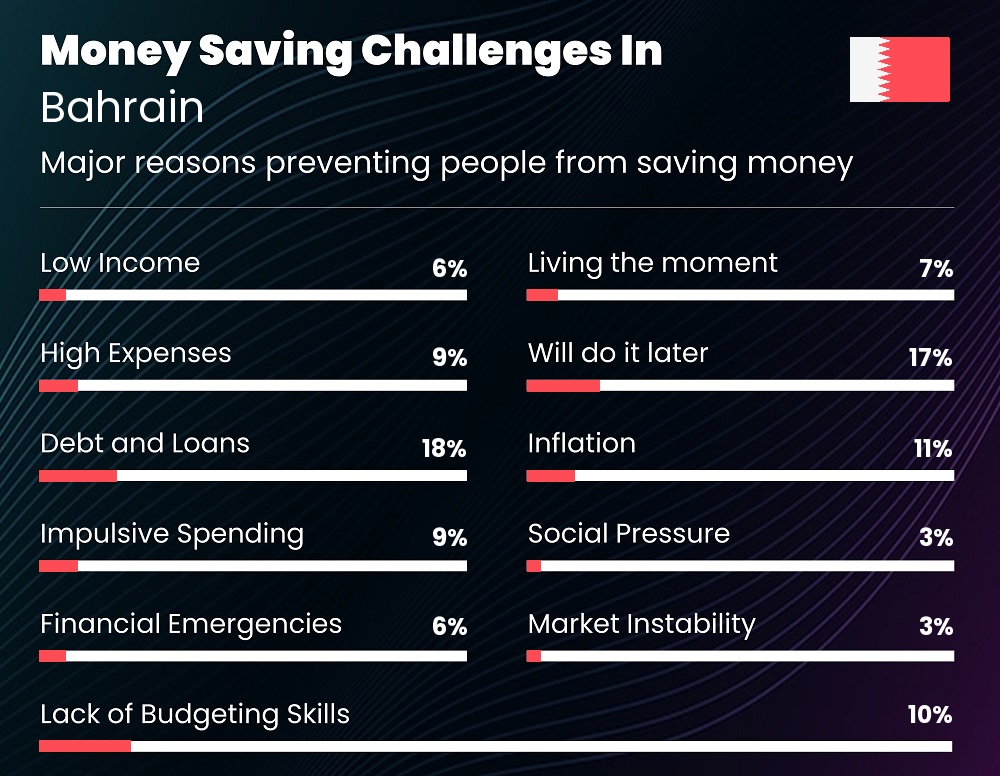
Saving Challenges in Bahrain
Reasons that make it difficult for families to save money
We wanted to understand what is stopping families from maximizing their savings in Bahrain. Listed below are the answers given by the survey participants.
| Reason | % People |
|---|
| Low Income | 6% |
| High Expenses | 9% |
| Debt and Loans | 18% |
| Lack of Budgeting Skills | 10% |
| Impulsive Spending | 9% |
| Financial Emergencies | 6% |
| Living the moment | 7% |
| Will do it later | 17% |
| Inflation | 11% |
| Social Pressure | 3% |
| Market Instability | 3% |
Around 6% of the families said that their salary is too low to accommodate a portion for savings while 9% said that the high cost of living leaves little room for savings. 18% of the residents said that they are burdened with debt and find it challenging to save money. 10% reported that they just don't have the knowledge or discipline to create and stick to a budget, leading to overspending and an inability to save. 9% of families blamed impulsive spending as the reason for saving inability. Around 6% said that unexpected expenses like medical bills or car repairs are derailing their savings goals. 7% bluntly said that they don't see the purpose of it and prefer to live each day to the fullest. 17% reported that they understand the value of saving but are putting off saving for the future, thinking they have plenty of time to start later. 11% blamed inflation, saying that every time they save some money they end up using it immediately. A surprising 3% said that social pressure and keeping up with peers or social expectations makes them overspend. Lastly, 3% blamed market instability and price fluctuations.
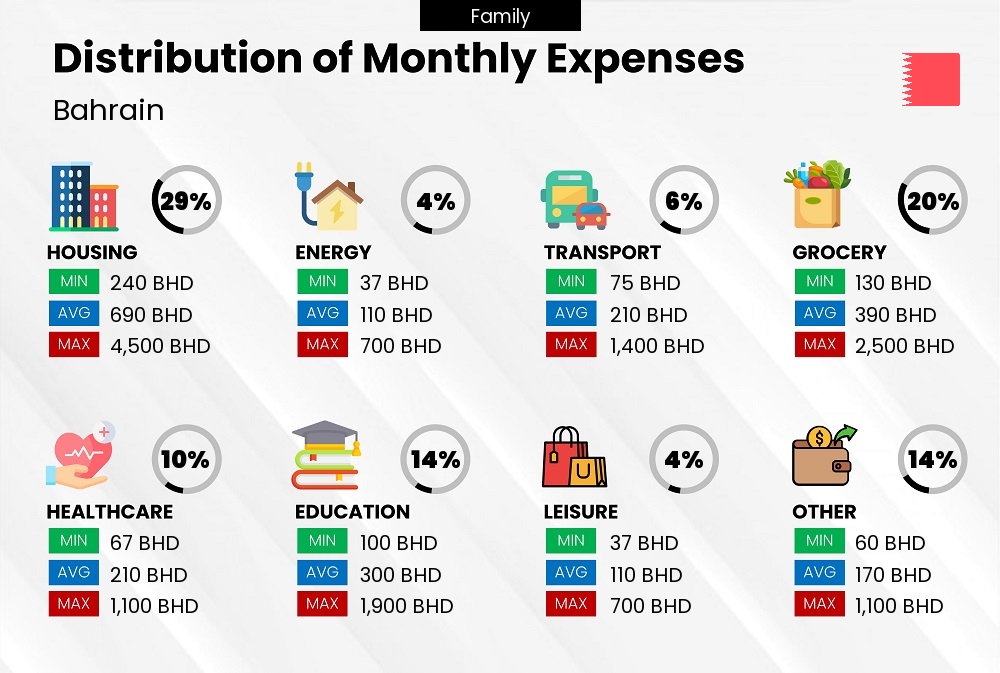
How do families spend their money in Bahrain?
We asked thousands of families about their spending habits and expenditure break down.
The percentage figures in this section are percentages of total spending not income. If you would like to see the percentage of expenses as related to income or salary, see other sections.
Housing and accomodation expenditure for families
Accomodation Cost29%
29% of total expenses on average (24% to 39%)
| LOW | $270 100 BHD |
| AVERAGE | $1,400 510 BHD |
| HIGH | $14,000 5,100 BHD |
| Per Month |
Families in Bahrain typically spend from 24% to 39% of their total monthly expenditure on housing with 29% being the average. The average monthly spend on housing is 510 BHD with expenditure ranging from 100 BHD to 5,100 BHD. This cost mainly goes for rent but it also includes other accommodation-related expenses.
Electricity, utilities, energy, water, internet, and mobile expenditure for families
Cost of utilities4%
4% of total expenses on average (2% to 7%)
| LOW | $43 16 BHD |
| AVERAGE | $210 80 BHD |
| HIGH | $2,100 800 BHD |
| Per Month |
Utility expenditure like electricity, water, and gas in Bahrain ranges from 2% to 7% of total expenses with 4% being the average for most families. The average monthly cost of utilities is 80 BHD with 16 BHD and 800 BHD being the upper and lower limits for a family of four.
Transport, fuel, and commute expenditure for families
Cost of transport and fuel6%
6% of total expenses on average (4% to 8%)
| LOW | $85 32 BHD |
| AVERAGE | $430 160 BHD |
| HIGH | $4,300 1,600 BHD |
| Per Month |
Fuel consumption and cost of transport depend heavily on whether a family resides near school and work, but roughly speaking a family would expect to spend from 32 BHD to 1,600 BHD in a month on commuting with 160 BHD being the norm for most families. This means that money spent on transport constitutes about 6% of total spending on average but can go as low as 4% or as high as 8%.
Food, groceries, and basic shopping expenditure for families
Food and Groceries Cost20%
20% of total expenses on average (13% to 26%)
| LOW | $150 58 BHD |
| AVERAGE | $770 290 BHD |
| HIGH | $7,700 2,900 BHD |
| Per Month |
The average outlay on groceries and basic houshold items for a typical family in a month in Bahrain is 290 BHD. The cost of groceries can range between 58 BHD to 2,900 BHD. Families spend on average about 20% on food and groceries with upper and lower bounds of 13% and 26% respectively.
Healthcare and medical services expenditure for families
Cost of healthcare10%
10% of total expenses on average (6% to 15%)
| LOW | $77 29 BHD |
| AVERAGE | $430 160 BHD |
| HIGH | $3,400 1,300 BHD |
| Per Month |
Families in Bahrain allocate 6% to 15% of their total monthly expenditure to healthcare including health insurance and out-of-pocket medical expenses. The average spending on medical services and clinic visits is around 10%. The range of medical expenses range from 29 BHD to 1,300 BHD with 160 BHD being the norm for most families.
Leisure and shopping expenditure for families
Cost of leisure and shopping4%
4% of total expenses on average (2% to 8%)
| LOW | $43 16 BHD |
| AVERAGE | $210 80 BHD |
| HIGH | $2,100 800 BHD |
| Per Month |
This category mostly contains discretionary or non-essential expenses but also some non-discretionary spending like furniture for example. The monthly expenses range from 16 BHD to 800 BHD with 80 BHD being the average. Speaking of percentages, that equates to 2% to 8% of total expenses with an average of 4% for most families.
Education and schooling expenditure for families
Cost of education and schooling14%
14% of total expenses on average (7% to 22%)
| LOW | $120 45 BHD |
| AVERAGE | $600 220 BHD |
| HIGH | $6,000 2,200 BHD |
| Per Month |
Spending on education can vary drastically between different families. On average, education constitutes 14% of the monthly expenditure of families with 7% and 22% being the lower and upper bounds respectively. The average reported education cost is 220 BHD per month with 45 BHD being the minimum spent amount and 2,200 BHD being the maximum.
Other Expenses14%
14% of total expenses on average (7% to 19%)
| LOW | $68 26 BHD |
| AVERAGE | $340 130 BHD |
| HIGH | $3,400 1,300 BHD |
| Per Month |
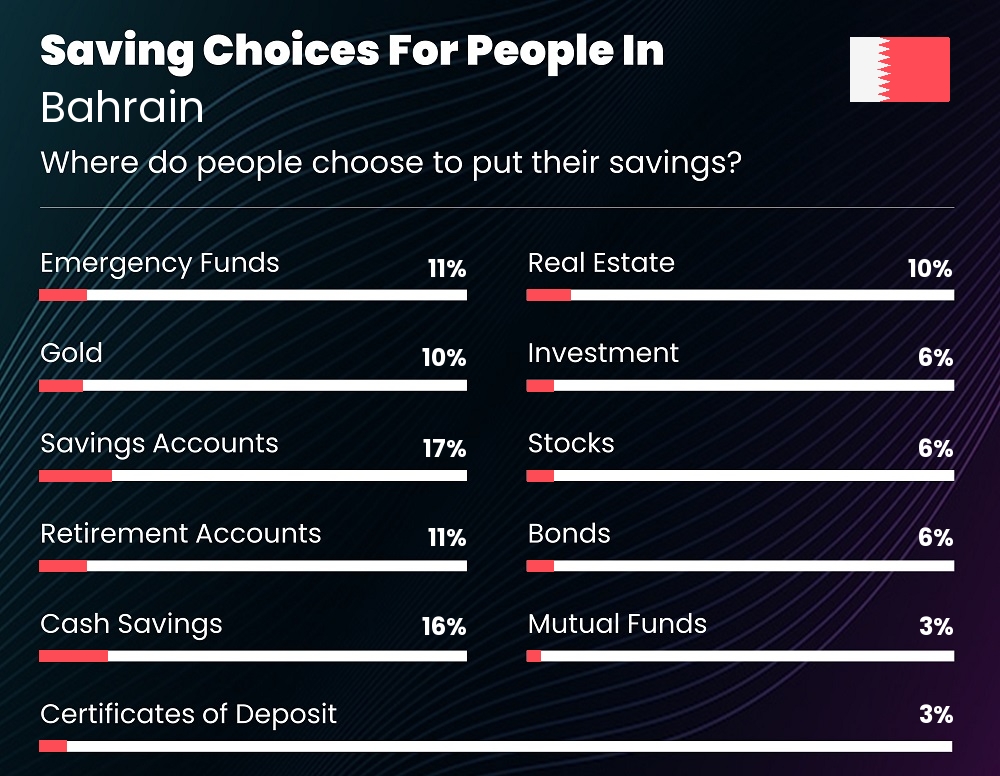
Typical saving choices for families in Bahrain
Where do people choose to put their savings?
| Saving Type | % People |
|---|
| Emergency Funds | 11% |
| Gold | 10% |
| Savings Accounts | 17% |
| Retirement Accounts | 11% |
| Cash Savings | 16% |
| Real Estate | 10% |
| Investment | 6% |
| Stocks | 6% |
| Bonds | 6% |
| Mutual Funds | 3% |
| Certificates of Deposit | 3% |
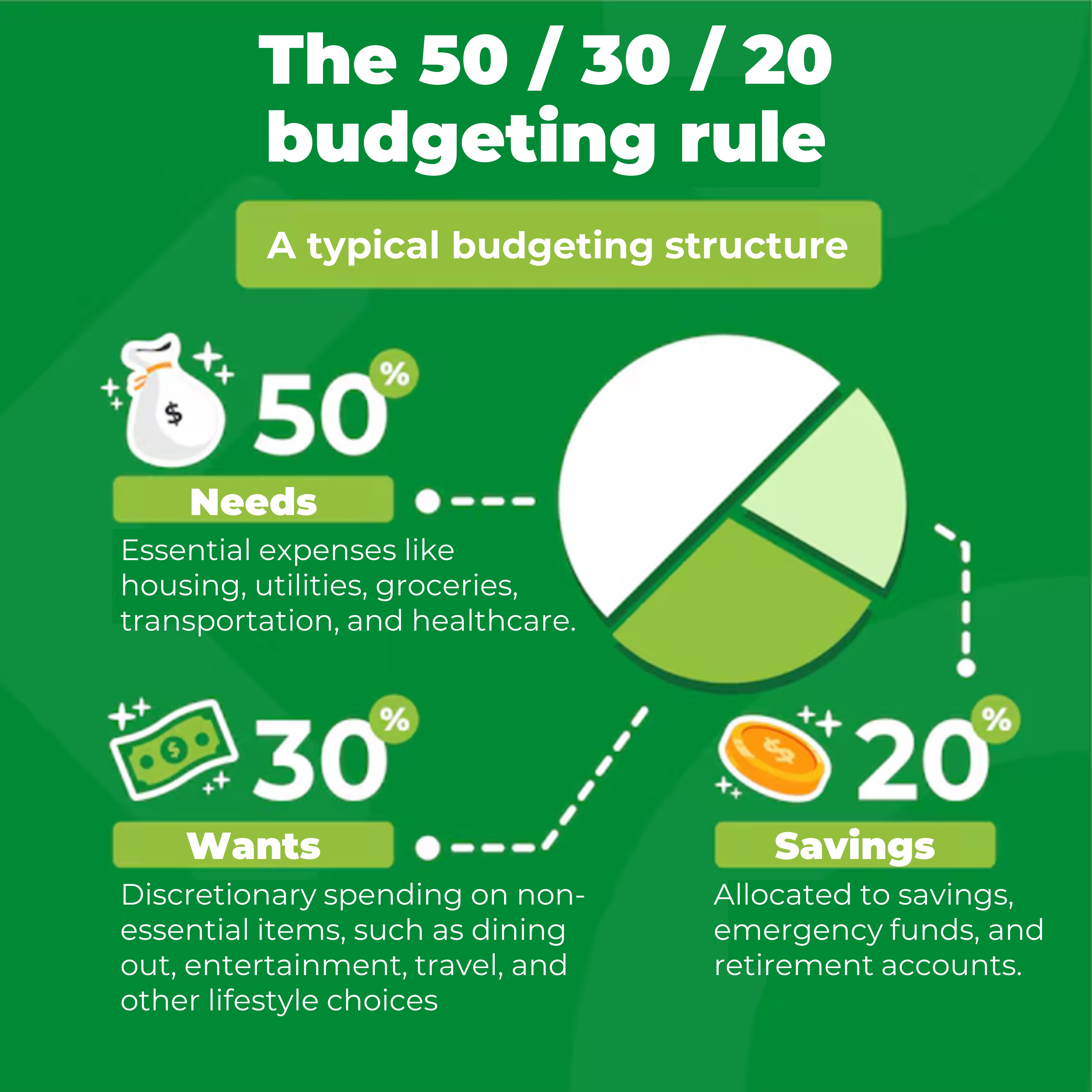
A typical and healthy budgeting structure
The 50/30/20 rule
Spending among different people can vary significantly based on factors such as their income, lifestyle,
location, and personal preferences. A commonly used guideline for budgeting is the 50/30/20 rule,
which suggests allocating your income into three main categories in the following percentages.
50% for needs and financial obligations
This category includes essential expenses like housing, utilities, groceries, transportation, and healthcare.
30% for wants and discretionary spending
This category covers discretionary spending on non-essential items, such as dining out, entertainment, travel, and other lifestyle choices.
20% for savings and emergency fund
This is the percentage that must be allocated to savings, emergency funds, and retirement accounts.
About financial planning, money management, and household budgeting
The 50/30/20 rule is used as a general guideline but may not be the best choice for all people. There are in fact many budgeting plans out there like the 70/20/10 and the 60/20/20 rules, all claiming to be the best. More important than all of this is to establish financial discipline by creating a budget tailored to your specific financial goals and situation. It is very important that your financial outflow be less than your income to maintain a healthy cash flow.
Emergency Funds For Families
An emergency fund is a financial safety net comprised of easily accessible savings set aside to cover unexpected expenses or financial emergencies, typically amounting to three to six months' worth of living expenses. We asked families whether they have an emergency fund and the answers were as follows.
Yes69%
No31%
Based on the survey, 31% of the families living in Bahrain said that they don't have an emergency fund while 69% said that they do.
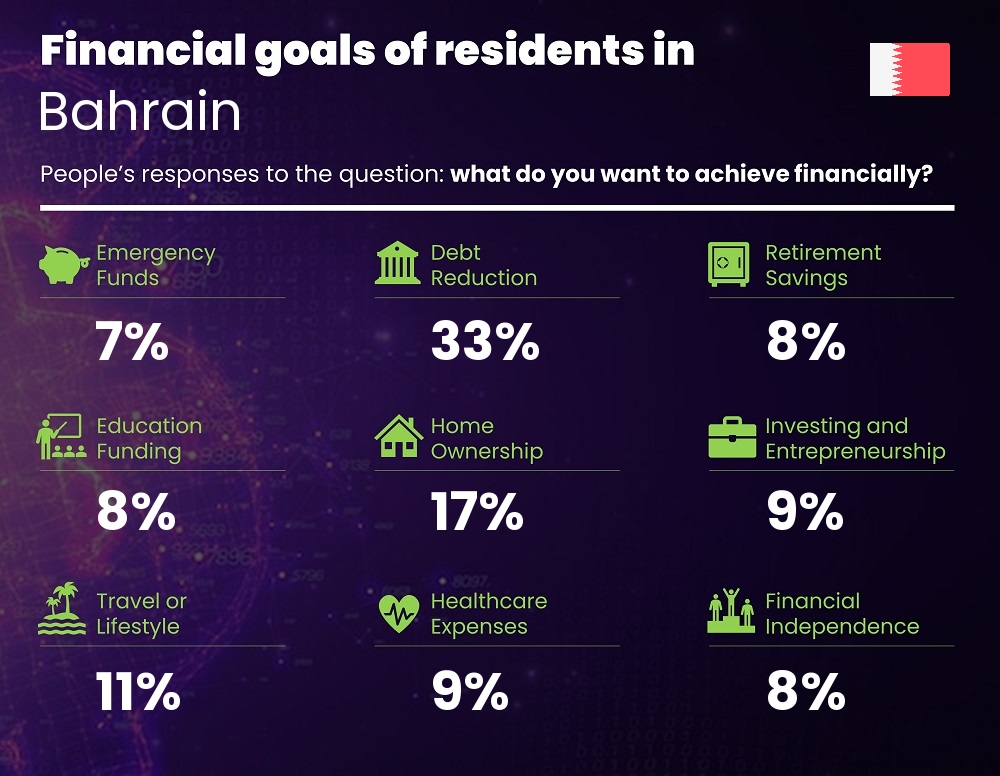
Financial goals of families in Bahrain
In an attempt to understand the economic situation in Bahrain, we asked participants about their financial targets. By knowing what the population in general is trying to achieve, we can shed light on the economic outlook, cost of living, and quality of life in general.
| Financial Goal | % People |
|---|
| Emergency Fund | 7% |
| Debt Reduction | 33% |
| Retirement Savings | 8% |
| Education Funding | 8% |
| Homeownership | 17% |
| Investing | 9% |
| Travel or Lifestyle | 11% |
| Healthcare Expenses | 9% |
| Financial Independence | 8% |
Around 7% of families said that their main goal is to establish an emergency fund to cover unexpected expenses while 33% said their number one priority is to pay off high-interest debt or loans and improve credit. 8% of surveyed people confirmed that saving for retirement to ensure a comfortable lifestyle in the final years is their main target. Around 8% reported that their priority is saving for the tuition fees and education costs of their children while 17% choose to buy a home or pay off existing mortgage before other things. 9% of the population would like to build wealth through investments such as stocks, bonds, mutual funds, or real estate. For 11% of people, saving for vacations or upgrading their lifestyle is the number one concern. Approximately 9% of the residents said that saving for healthcare expenses including insurance premiums is their main goal.
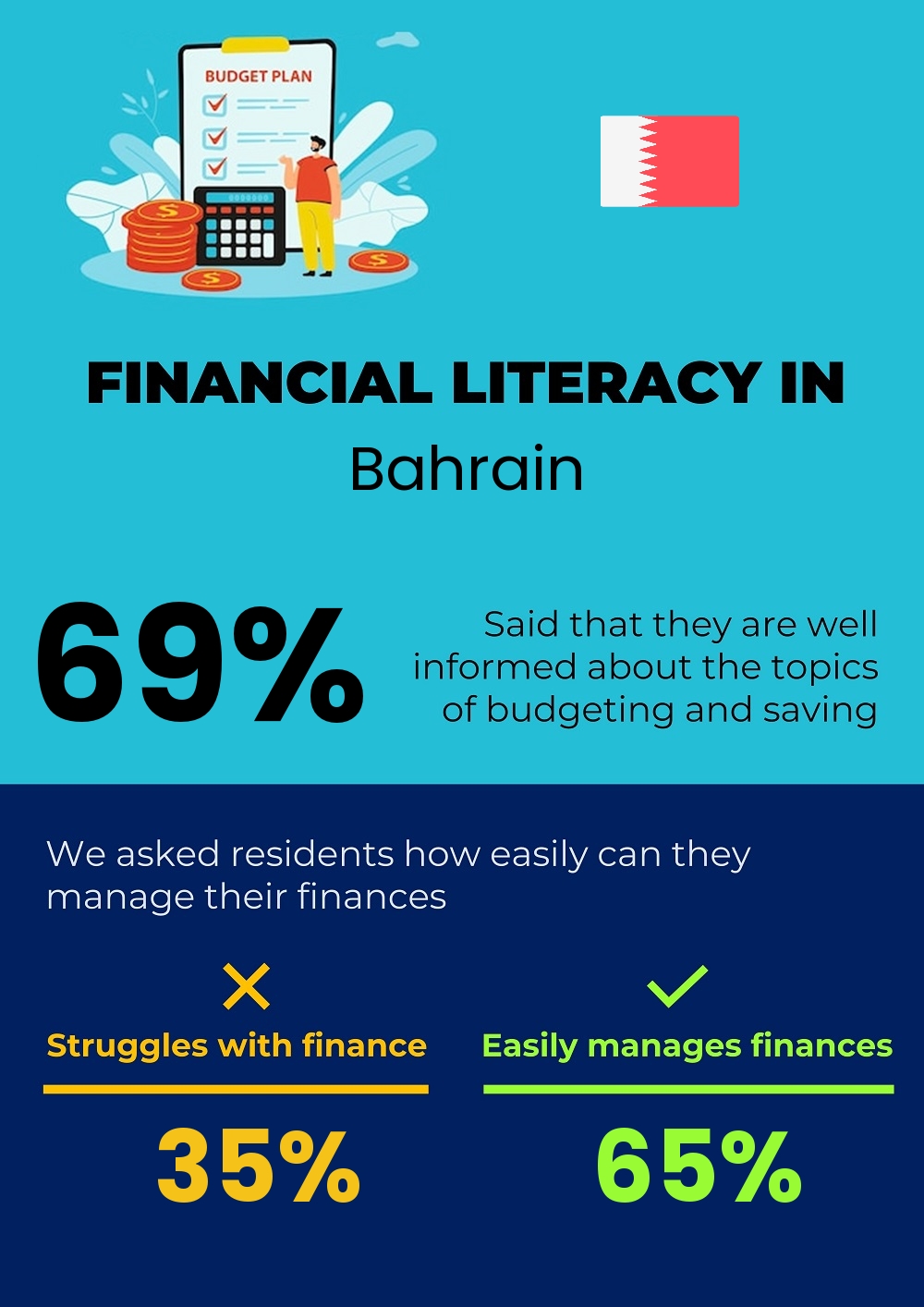
Financial Literacy in
Financial literacy is the knowledge of concepts and principles related to personal finance that allow individuals to make informed decisions regarding their money such as budgeting, saving, investing, borrowing, managing debt, financial risk management, and planning.
Financial Leteracy69%
We asked family guardians and parents in Bahrain whether they acquired any adequate personal financial training in their lives. Approximately 31% of the people who participated in the survey said that they are not well informed about the topics of budgeting, saving, etc., and just manage things based on their own experience, while 69% said that they know about the general principles of personal finance from sources other than their own experience.
Difficulty in Budgeting and Financial Planning
We wanted to understand whether families of have problems or difficulties in managing their expenditures and savings so we asked people one simple question: do you struggle with your personal finances? 35% of the participants reported that they indeed struggle in creating budgets and in organizing their finances while 65% said that they have everything under control.
Struggles with finance35%
Easily manages finances65%
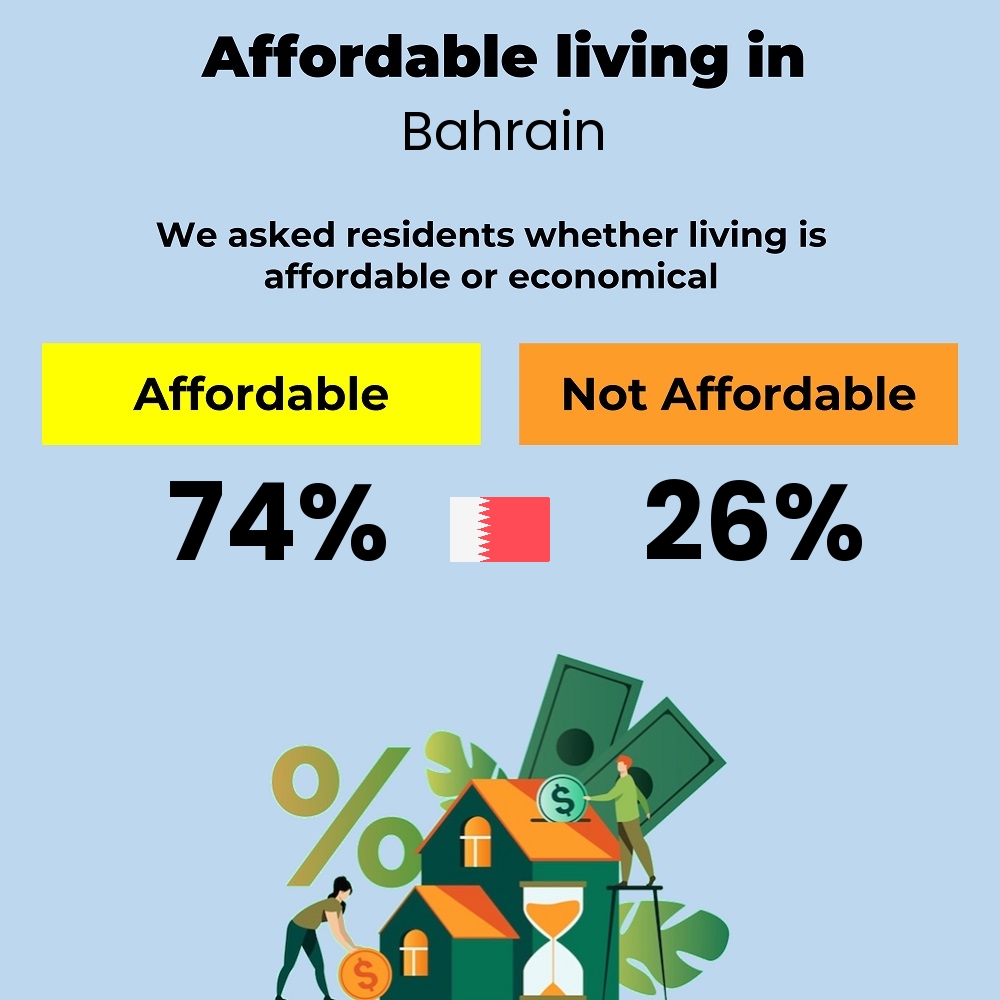
Affordable living in Bahrain
Income and cost of living compatibility
We asked families one simple question and recorded their answers.
Is it affordable or economical to live in Bahrain?
Around 74% of surveyed families think that living in Bahrain is affordable with proper budgeting while 26% reported that it is just too expensive and not affordable even with frugality and thriftness.
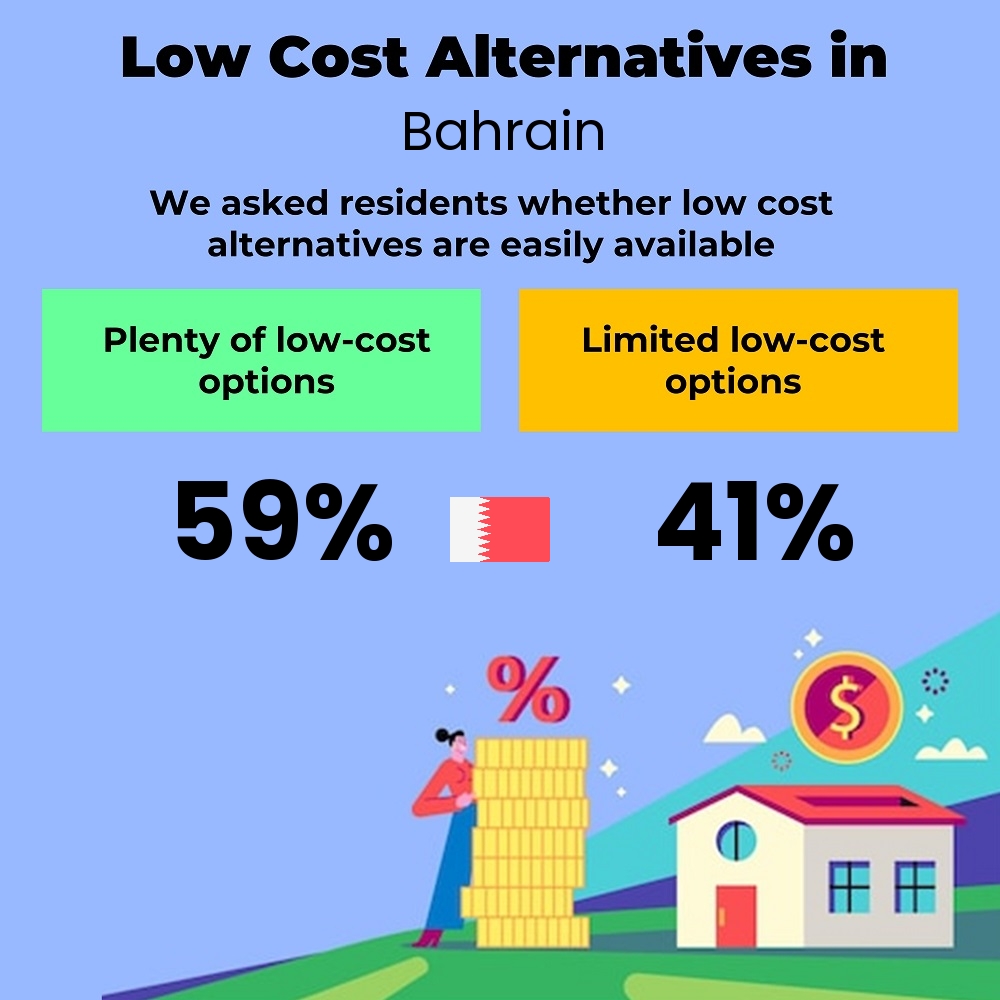
Low-cost alternatives in Bahrain
People are always looking for ways to cut down expenses and reduce expenditures. The hallmark of any affordable place is the availability of discount stores, bargain deals, smart or secondhand shopping, refurbished items, and couponing. We asked families how easily cost-cutting is and the answers were distributed as follows:
Plenty of low-cost options59%
Few low-cost options41%
Based on the survey, 59% of the families living in Bahrain have no problem finding low-cost alternatives to support a frugal lifestyle while 41% think that thriftness is difficult due to scarcity in discount markets and secondhand outlets.
Monthly costs and expenses of energy and basic utilities in Bahrain
Utilities expenditure can vary slightly between different areas and locations.
Energy, electricity, water, gas, internet, and mobile cost in Bahrain

Utility Bill Cost / Electricity + Water + Gas / Family

Internet and cable cost

Mobile phone bill and charges
Because most utility bills club electricity, water, and gas costs in one bill, we can't provide a breakup for each type of utility and will display electricity, gas, and water as single cost.
The average monthly energy and water consumption of families is around 80 BHD. The cost of internet and WiFi ranges from 7.5 BHD to 20 BHD with 15 BHD being the average internet bill. Finally, the average monthly mobile charges is around 10 BHD but can range between 6 BHD and 30 BHD depending on consumption. Mobile charges include both calling minutes as well as data packages.
Energy / Utility expense to income ratio
( monthly utility expenses / monthly income ) x 100
The average utility-to-income ratio in Bahrain is around 5%. This means that people pay 5% of their income for energy, water, internet, and mobile charges. Those figures can range from 2% to 9% depending on salary and location.
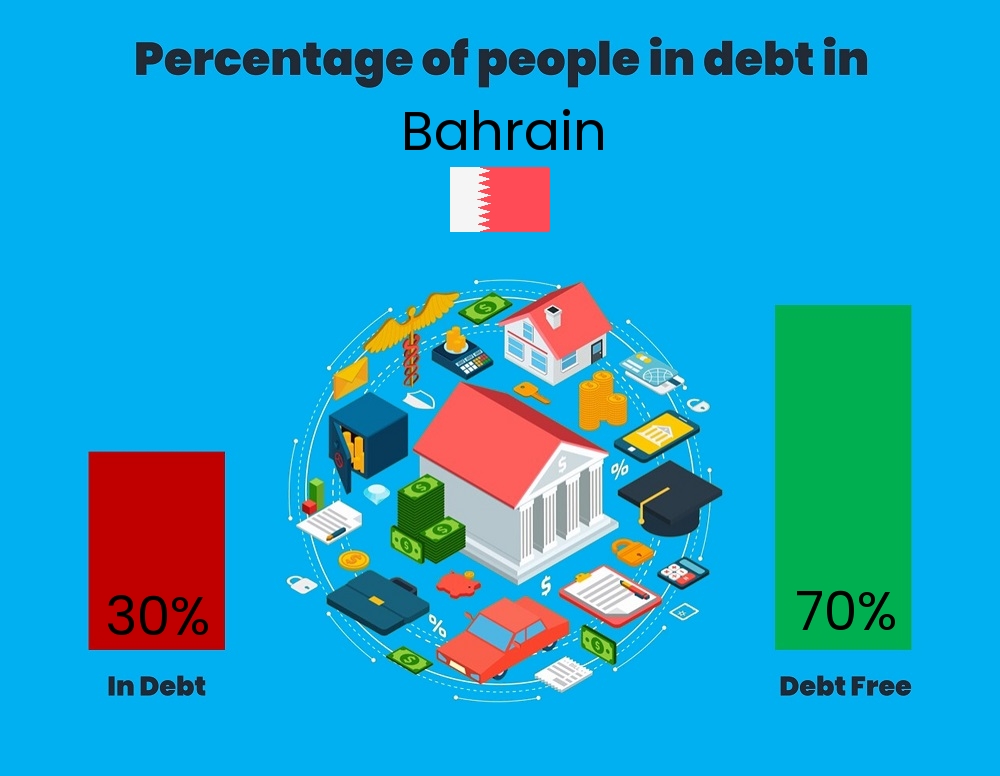
Debt, loans, and mortgages in Bahrain
Percentage of families who are in debt
According to the survey, 30% of the families in Bahrain have some kind of debt, loan, mortgage, or credit card payments while 70% reported that they don't have financial obligations to banks.
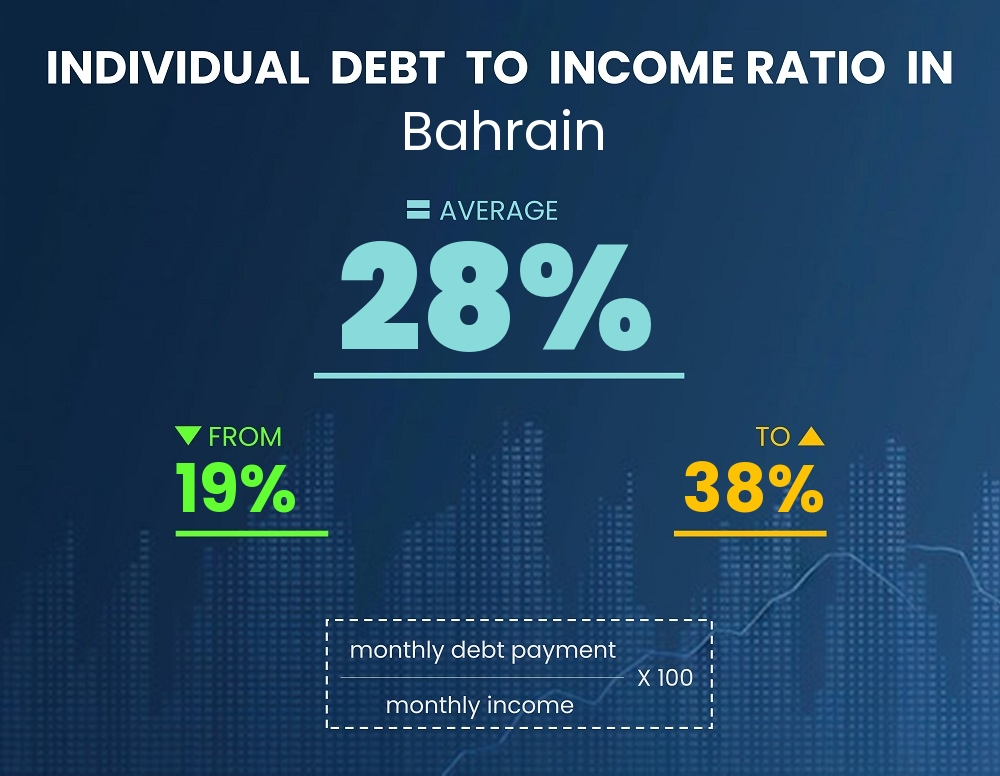
Debt-to-income ratio in Bahrain
Debt to income ratio
28%
19% to 38%
( monthly debt payment / monthly income ) x 100
Interpretation
The debt-to-income ratio measures the percentage of income being paid as debt settlement across the population. It is calculated by dividing the monthly debt settlement payment of an individual by their monthly income. Based on collected data, approximately 28% of a family's monthly income in Bahrain goes to debt settlement.
Debt levelsMonthly debt settlement payment as percentage of monthly income
| Debt-to-income ratio | % People |
|---|
| > 60% | 3% |
| 50% - 60% | 12% |
| 40% - 50% | 11% |
| 30% - 40% | 13% |
| 20% - 30% | 15% |
| 10% - 20% | 18% |
| 0% - 10% | 28% |
According to our data, 3% of the debtors in Bahrain pay 60%+ of their income as debt settlement while 12% of the people pay 50% to 60% of their income for the same, which is quite an alarming financial situation for those individuals. 11% of people in debt dedicate 40% to 50% of their income to loan and mortgage payments while 13% dedicated 30% to 40% of income for same. Things are looking brighter for 15% of individuals as they only pay 20% to 30% of their income for loan and credit card repayment.
Distribution by type of debt in Bahrain
| Debt | % People |
|---|
| Real Estate Mortgage | 13% |
| Auto Loan | 22% |
| Student Loan | 3% |
| Credit Card | 25% |
| Personal Loan | 37% |
13% of debtors in Bahrain confirm that real estate mortgages constitutes the main part of their outstanding debt while 25% say that credit card payments are the reason they are in debt. Auto loans were the main type of debt for 22% of people and personal loans rose at 37%. Lastly, student loans are the main source of debt for 3% of debtors in Bahrain.
About credit score and debt managementManaging debt is a critical aspect of maintaining a favorable credit score. Debt reduction is the first thing you should do improve your financial situation. Getting rid of debt takes precedence over saving money because of interest rates.
Good debt vs. Bad debt
Not all debt is bad. Good debt typically refers to borrowing money for investments that can increase in value or generate income over time like purchasing a home or acquiring student loans. On the other hand, bad debt involves borrowing for things that fail to generate lasting value like high-interest credit card debt used for non-essential expenses like luxury items or vacations.
Loan Affordability Index in Bahrain
Besides measuring the loan-to-income ratio, we asked families how many times in a year they defaulted or were unable to pay their due credit card or loan payments on time. Understanding how often people default on their due payments is one of the indicators of the cost of living and economic situation.
Frequency and percentage of people who failed to pay their monthly credit card or loan payments on time last year.
| Frequency | % People |
|---|
| Never | 55% |
| Once a year | 22% |
| Twice a year | 11% |
| Three times a year | 8% |
| Four times a year | 4% |
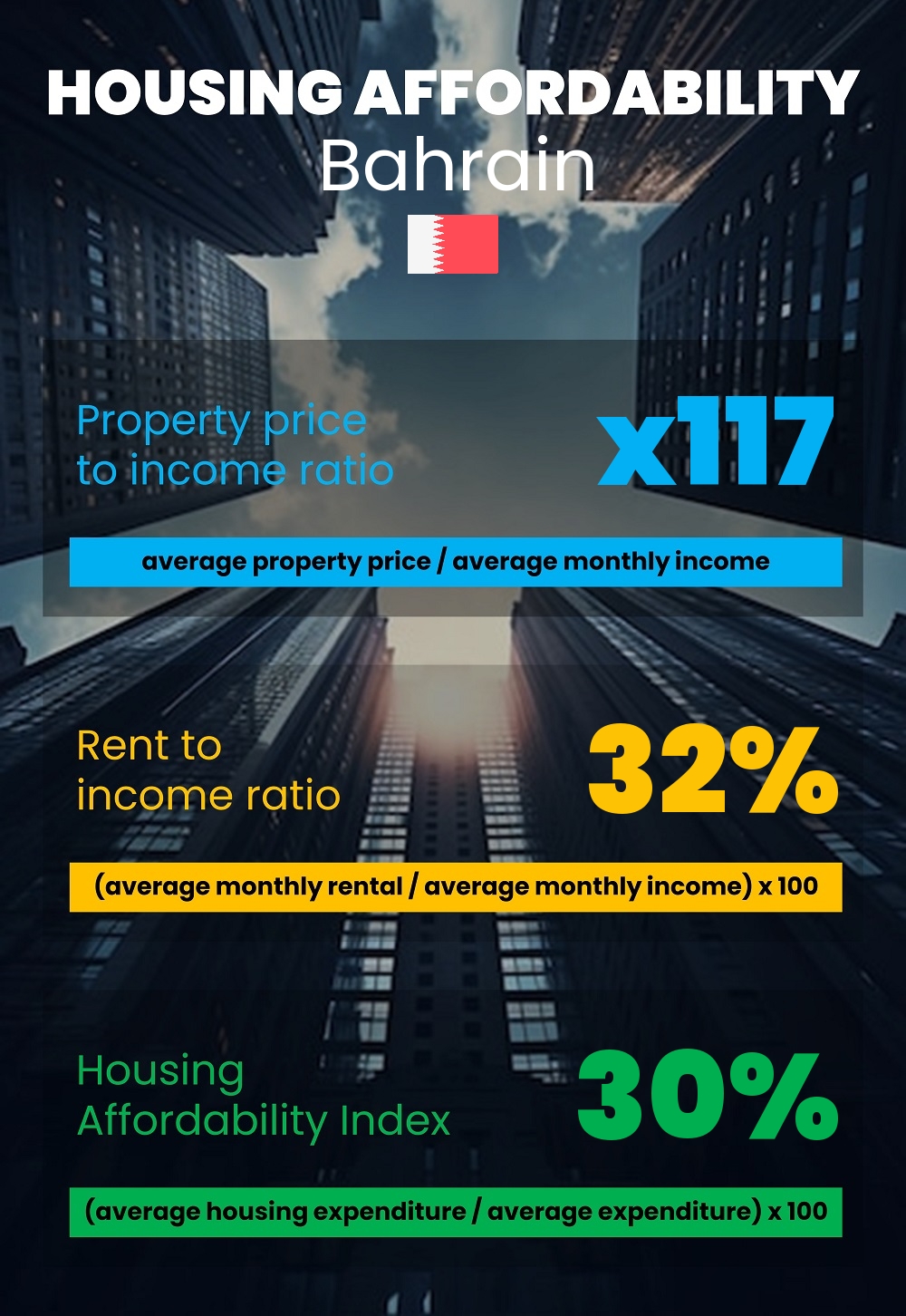
Housing costs, accommodation, and housing affordability in Bahrain
Rental costs and house/apartment prices can vary drastically between different areas and locations.
Rent Cost in Bahrain
Monthly Rent Prices

Studio apartment monthly rent cost

1-bedroom apartment monthly rent cost

2-bedroom apartment monthly rent cost
| 250 BHD | 380 BHD | 1,000 BHD |

3-bedroom apartment monthly rent cost
| 300 BHD | 500 BHD | 1,400 BHD |
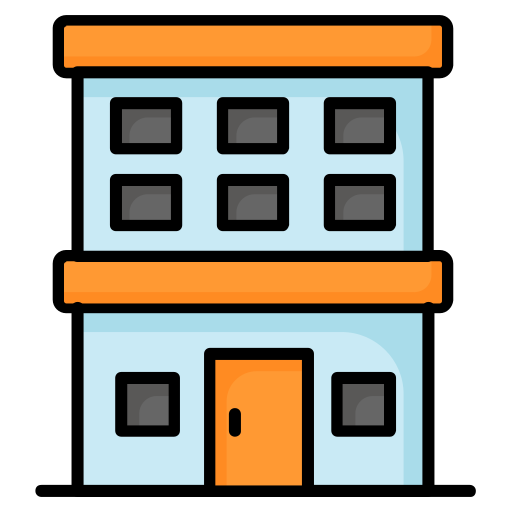
Furnished apartment monthly rent cost
| 600 BHD | 1,500 BHD | 3,000 BHD |
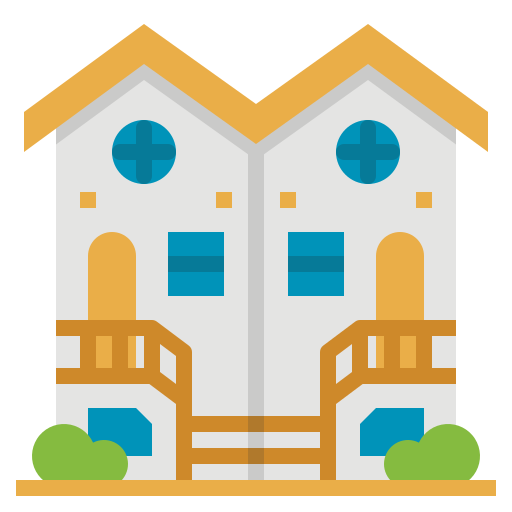
Townhouse monthly rent cost
| 500 BHD | 750 BHD | 2,100 BHD |
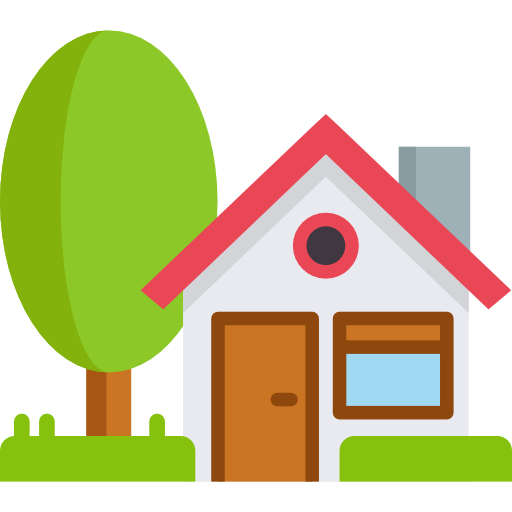
House monthly rent cost
| 600 BHD | 1,500 BHD | 3,000 BHD |

Villa monthly rent cost
| 750 BHD | 1,900 BHD | 3,000 BHD |
The monthly rental cost of a studio apartment in Bahrain ranges between 130 BHD and 500 BHD, meanwhile the cost of monthly rental of a one-bedroom apartment can be anywhere from 190 BHD to 750 BHD. Two-bedroom rentals rate ranges between 250 BHD and 1,000 BHD per month. The monthly rental for a three-bedroom apartment ranges from 300 BHD to 1,400 BHD. The average rent of a townhouse in Bahrain is around 750 BHD while house rental costs can be as high as 1,500 BHD per month. Finally, if you want to rent a villa, expect to pay anywhere from 750 BHD to 3,000 BHD per month.
Apartment and house prices in Bahrain
Cost of buying a property

Studio apartment price
| 25,000 BHD | 38,000 BHD | 75,000 BHD |
| $66,000 | $100,000 | $200,000 |

1-bedroom apartment price
| 30,000 BHD | 50,000 BHD | 190,000 BHD |
| $80,000 | $130,000 | $500,000 |

2-bedroom apartment price
| 50,000 BHD | 150,000 BHD | 300,000 BHD |
| $130,000 | $400,000 | $800,000 |

3-bedroom apartment price
| 170,000 BHD | 250,000 BHD | 750,000 BHD |

Townhouse price
| 210,000 BHD | 500,000 BHD | 1.9M BHD |

House price
| 250,000 BHD | 1.5M BHD | 2.1M BHD |

Villa price
| 300,000 BHD | 1.7M BHD | 2.5M BHD |
The average price of a studio apartment in Bahrain can range from 25,000 BHD to 75,000 BHD depending on location. One bedroom cost can be anywhere from 30,000 BHD to 190,000 BHD. A villa can cost you 1.7M BHD on average with prices ranging from 300,000 BHD to 2.5M BHD.
If you're leasing or purchasing, housing costs in Bahrain will probably constitute your biggest expenditure, yet it's an area where you wield considerable influence. This is due to the substantial variance in housing prices across communities. Keep in mind the location of your workplace and the accessibility of essential amenities to prevent negating the savings from lower rental rates with increased transportation expenses.
House / apartment prices to income ratio
Property price to income ratio
( average property price / average monthly income ) x 100
| 40 | x117 monthly income | 210 |
Property prices in Bahrain can be x117 to x210 multiples of the monthly income depending on the property and the income of the person. On average, property prices are approximately x117 multiples of the average monthly salary in Bahrain.
Rent to income ratio
Rent to income ratio
( monthly rental / monthly income ) x 100
The average rent-to-income ratio in Bahrain is around 32%. This means that people pay 32% of their income for rent. Those figures can range from 22% to 42% depending on the salary, location, and type of property.
The housing-to-income ratio is a very important metric to evaluate and measure how affordable living is in a particular area, city, or country since housing comprises the biggest chunk of expenditure. A higher housing to income ratio means that the place is relatively expensive. The figure by itself does tell much. It only starts to make sense when comparing the housing to income ratio across different locations.
Housing affordability index
The housing affordability index measures how affordable accommodation is in a particular place. This can measured in multiple ways, the most common being housing expenditure to total expenditure ratio and the rent to income ratio. The housing expenditure ratio is a figure reported by individuals on the percentage they allocate for housing. Rent to income ratio is calculated by dividing the average monthly rent by the average income. Because these values are both percentages, we can find their average and get the best of the two worlds.
Housing Affordability Index
30% Property Taxes
Real estate owners pay property taxes to local tax authorities, which are determined by the assessed value of their property. Typically, these taxes are paid once a year. Property tax funds contribute to community development, financing infrastructure improvements, public services, and local education initiatives.
Home Maintenance Costs
Home maintenance costs encompass various expenses associated with the upkeep and repair of a residence. These expenditures include regular tasks such as lawn care, pest control, and HVAC system servicing, as well as occasional repairs and renovations like fixing leaks, painting, or replacing appliances.
Urban vs. rural living costs
Urban living typically entails higher housing and transportation costs due to demand and limited space, while rural areas generally offer lower housing expenses but may have higher prices for goods and services. The differnce in rental rates between urban areas and rural areas can be as high as 300% in some cases.
Food Prices, Dining Expenses, and Grocery Costs in Bahrain
Grocery / Food expenditure and prices can vary drastically between different areas and locations.
Prices and cost of goods and services in Bahrain
Dining out, food, and beverages costs. Price variations for common food items.

Fast food combo meal price
The average price of a regular combo meal at a fast food outlet or chain like McDonald's, Pizzahut, or KFC in Bahrain is approximatly 3 BHD with meal cost ranging from 1.5 BHD to 5 BHD. The typical combo meal consists of a burger, french fries, and a drink.

Restaurant meal for one price
If you are planning to have a nice meal at a mid-range restaurant, expect to pay anywhere between 5 BHD and 15 BHD with 7.5 BHD being the average price of a plate for one person at a regular restaurant in Bahrain.

Fine dining meal for one price
The price range of a meal at fine-dining restaurant is 10 BHD to 60 BHD with the average cost being 15 BHD for one person. This is what you would expect to pay a top-tier diner in Bahrain.

Beverage prices, cappuccino, latte etc..
The average price of a regular beverage like cappuccino or latte at Starbucks, Costa, or similar coffee shops and cafes in Bahrain is around 2 BHD. Price ranges between 1.3 BHD and 3 BHD depending on the type of beverage, the size, and optional add-ons.
Grocery and market costs

Large bottle of milk price
The average price of a large bottle of milk in Bahrain is 1.2 BHD. The maximum what you would pay for milk is 1.5 BHD and the minimum being 1 BHD depending on the brand of milk and other properties.

12 eggs price
A dozen eggs costs around 1 BHD on average with 0.75 BHD and 1.5 BHD being the lower and upper limits respectively.

Fresh whole chicken price
The price range of a fresh whole chicken in Bahrain is between 1.7 BHD and 3.1 BHD depending on the size of the chicken and whether it is oraganic or not. The average price is approximatly 2.2 BHD.

Pack of beef price
The price of a regular pack of beef or meat is around 3 BHD. A pack of beef contains around 1Kg or 1lb depending on packing.

Medium bag of rice price
A bag of rice in Bahrain costs around 1.1 BHD on average with prices rangeing between 0.81 BHD and 1.6 BHD depending on the brand and quality.

Bag of tomatos price
| 0.30 BHD | 0.40 BHD | 0.75 BHD |
A bag of tomatoes costs anywhere from 0.30 BHD to 0.75 BHD. A bag of tomatoes denotes 1Kg or 1lb depending on location.

Bag of apples price
| 0.54 BHD | 0.70 BHD | 1.2 BHD |
A bag of apples costs 0.70 BHD on average. A bag of apples denotes 1Kg or 1lb depending on location.
Grocery and food expenditure to income ratio
( monthly grocery expenses / monthly income ) x 100
The average grocery-to-income ratio in Bahrain is around 26%. This means that families spend 26% of their income on grocery and basic household items. The expenditure can range from 18% to 32% depending on salary and location.
Expenditure on food and grocery for families
Families' spending on grocery ranges from 58 BHD to 2,900 BHD with the location, income, and size of the family being the most determinite factors.
Published: June 24, 2024 Last Update: November 14, 2025
